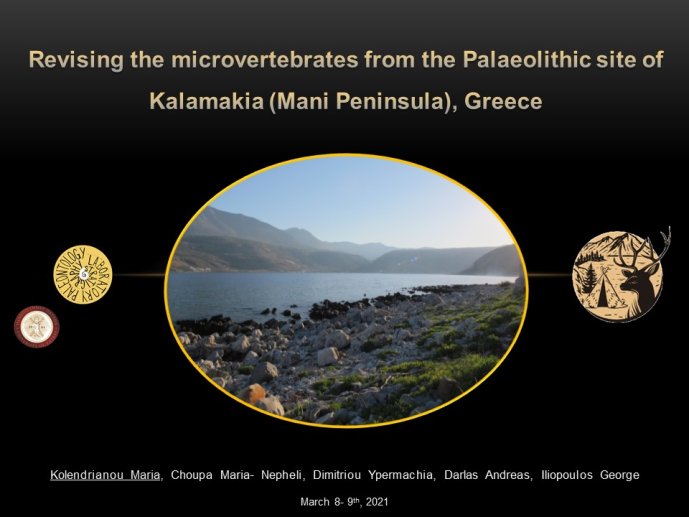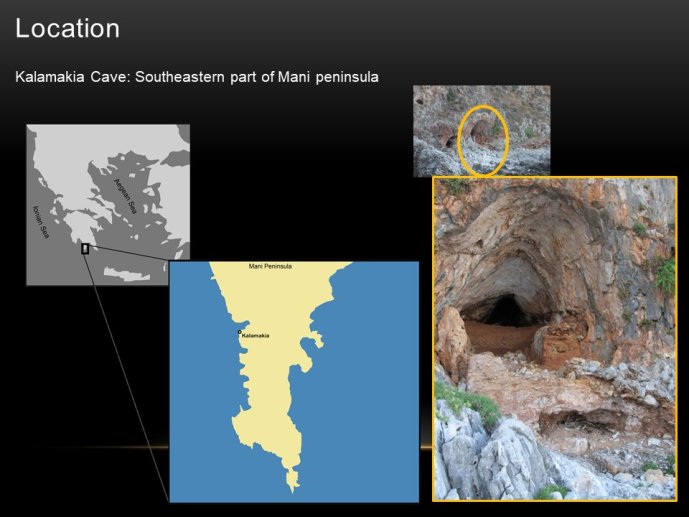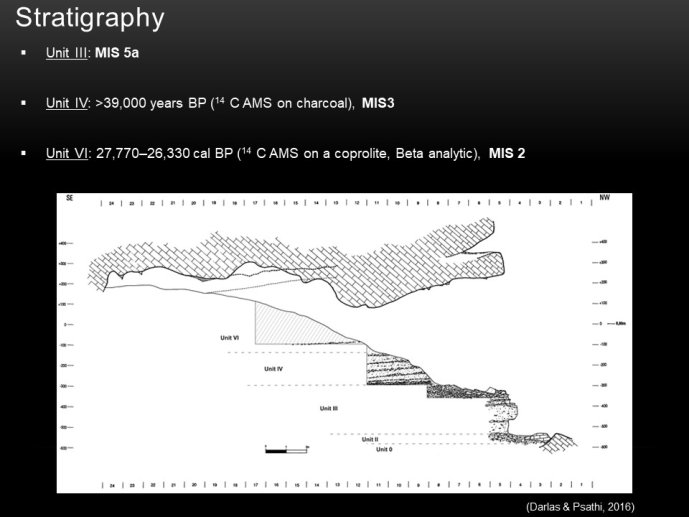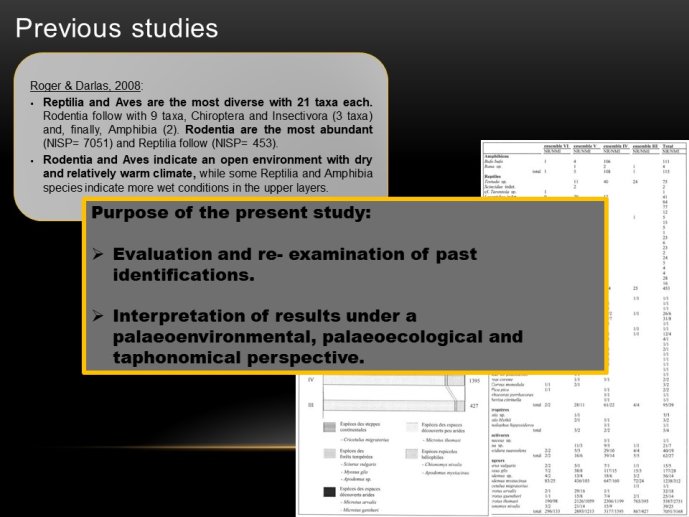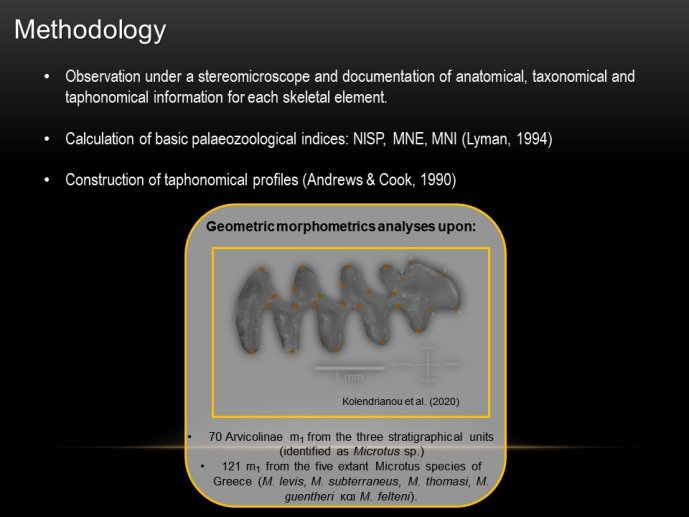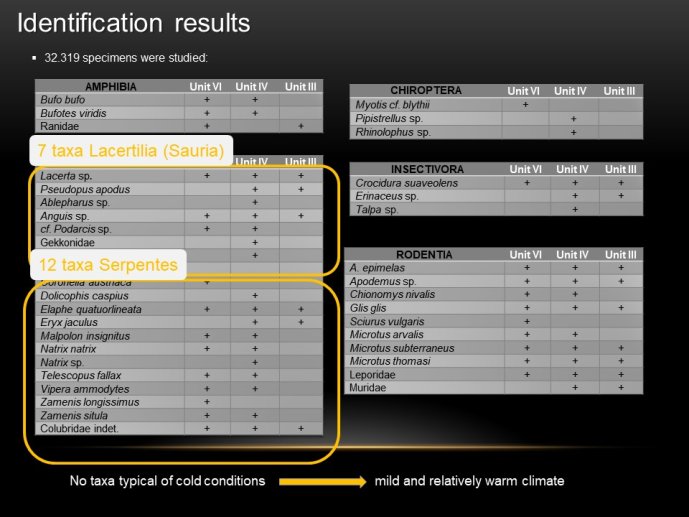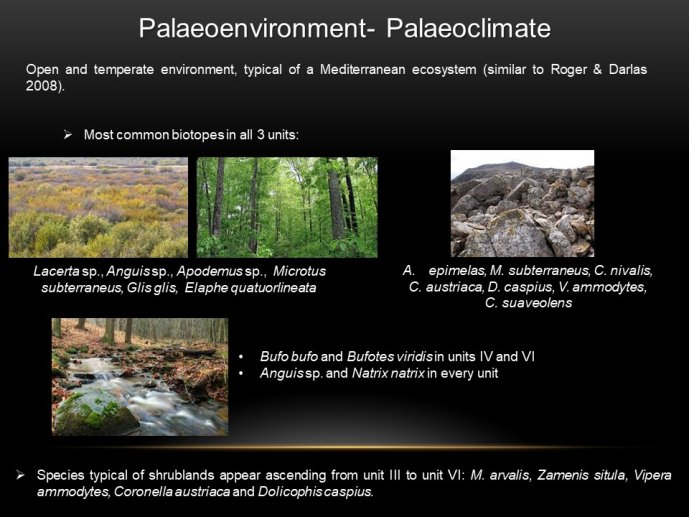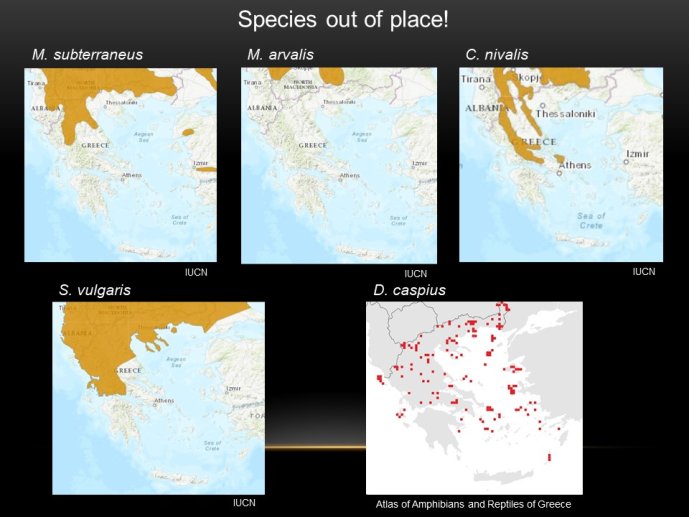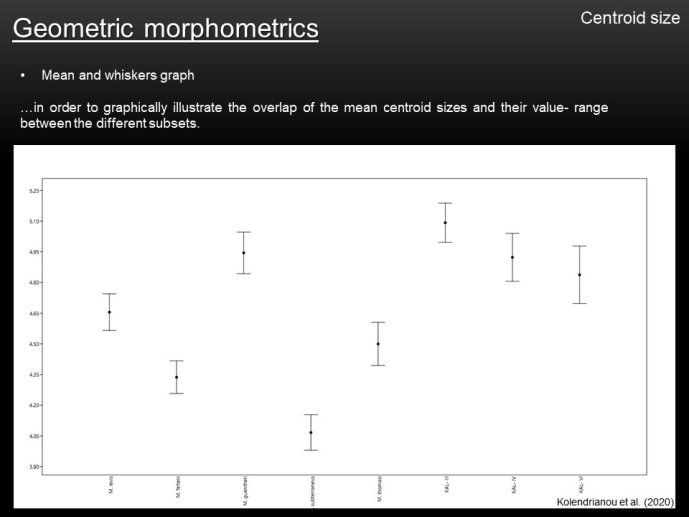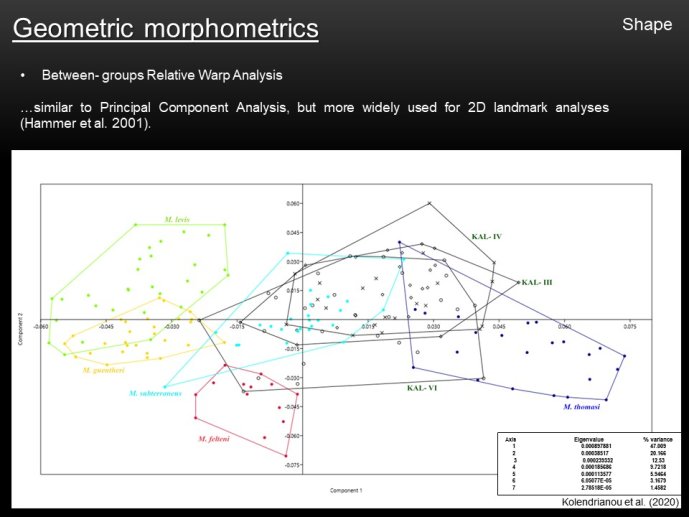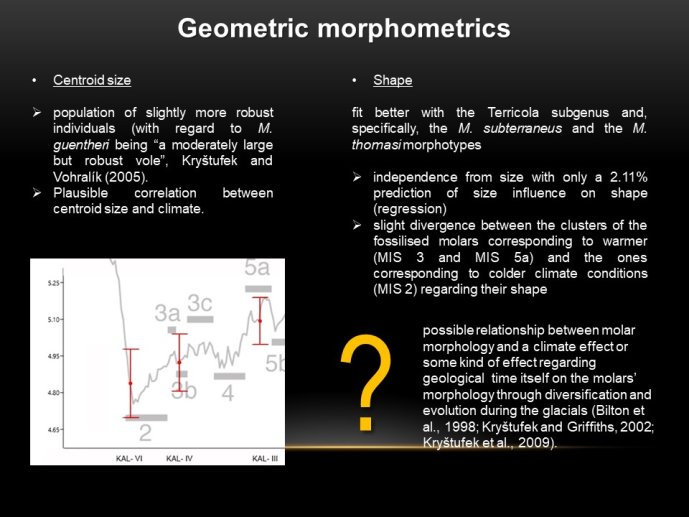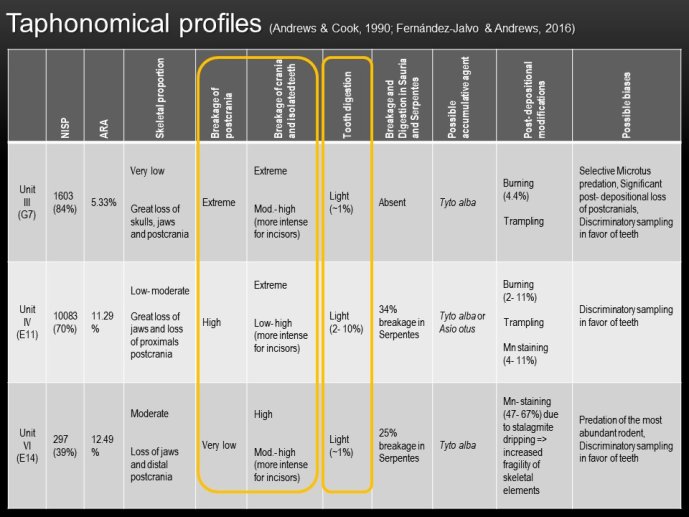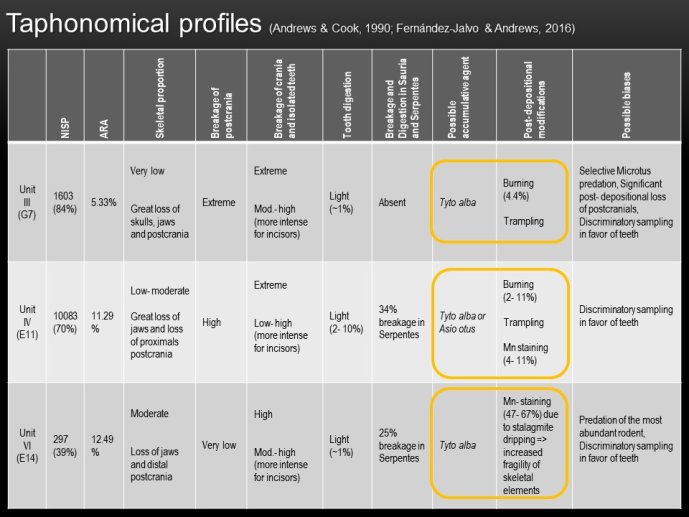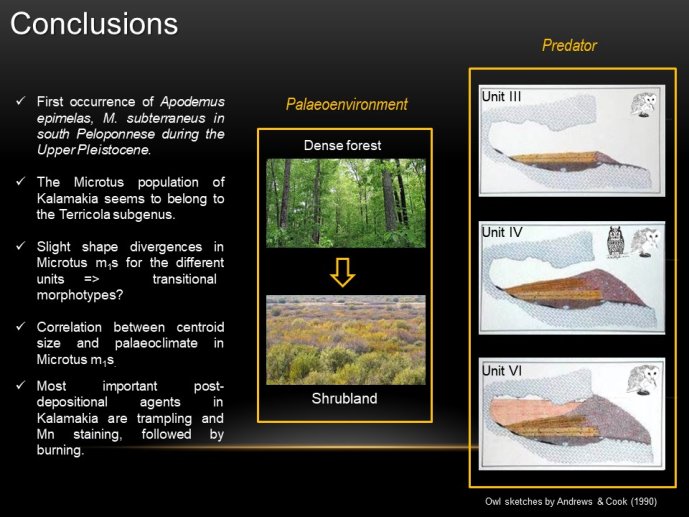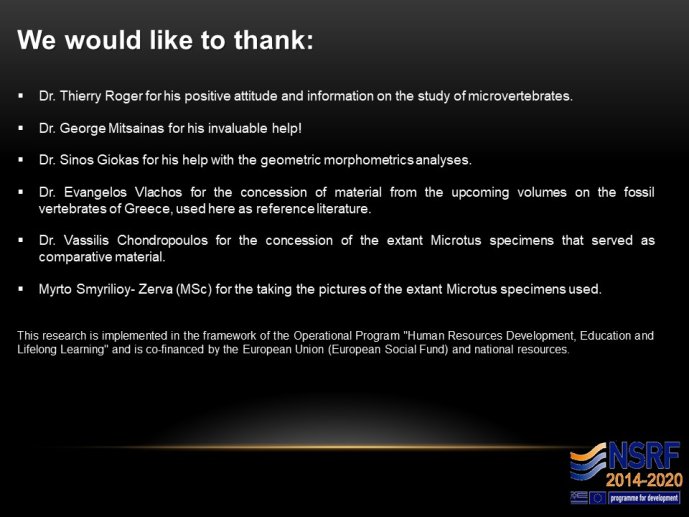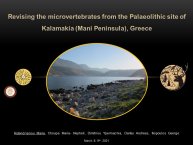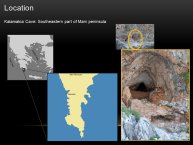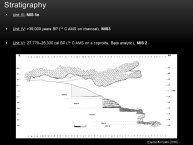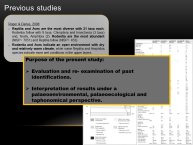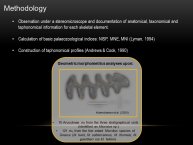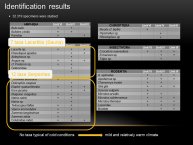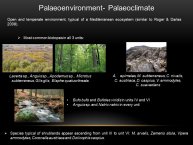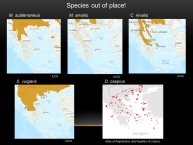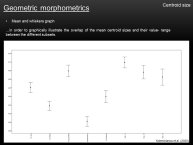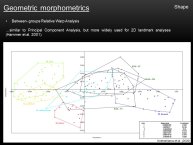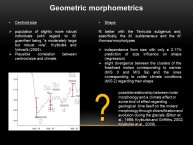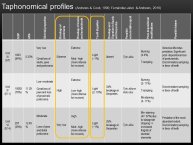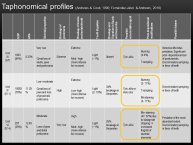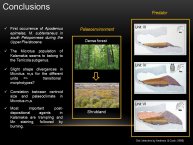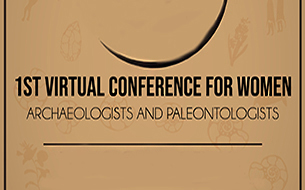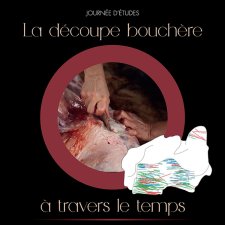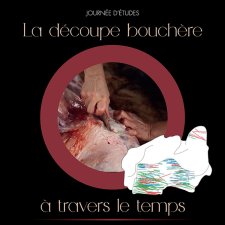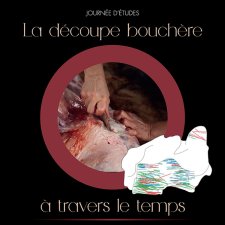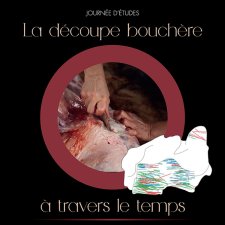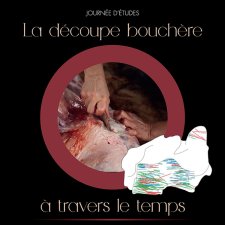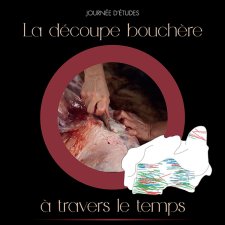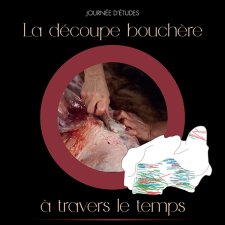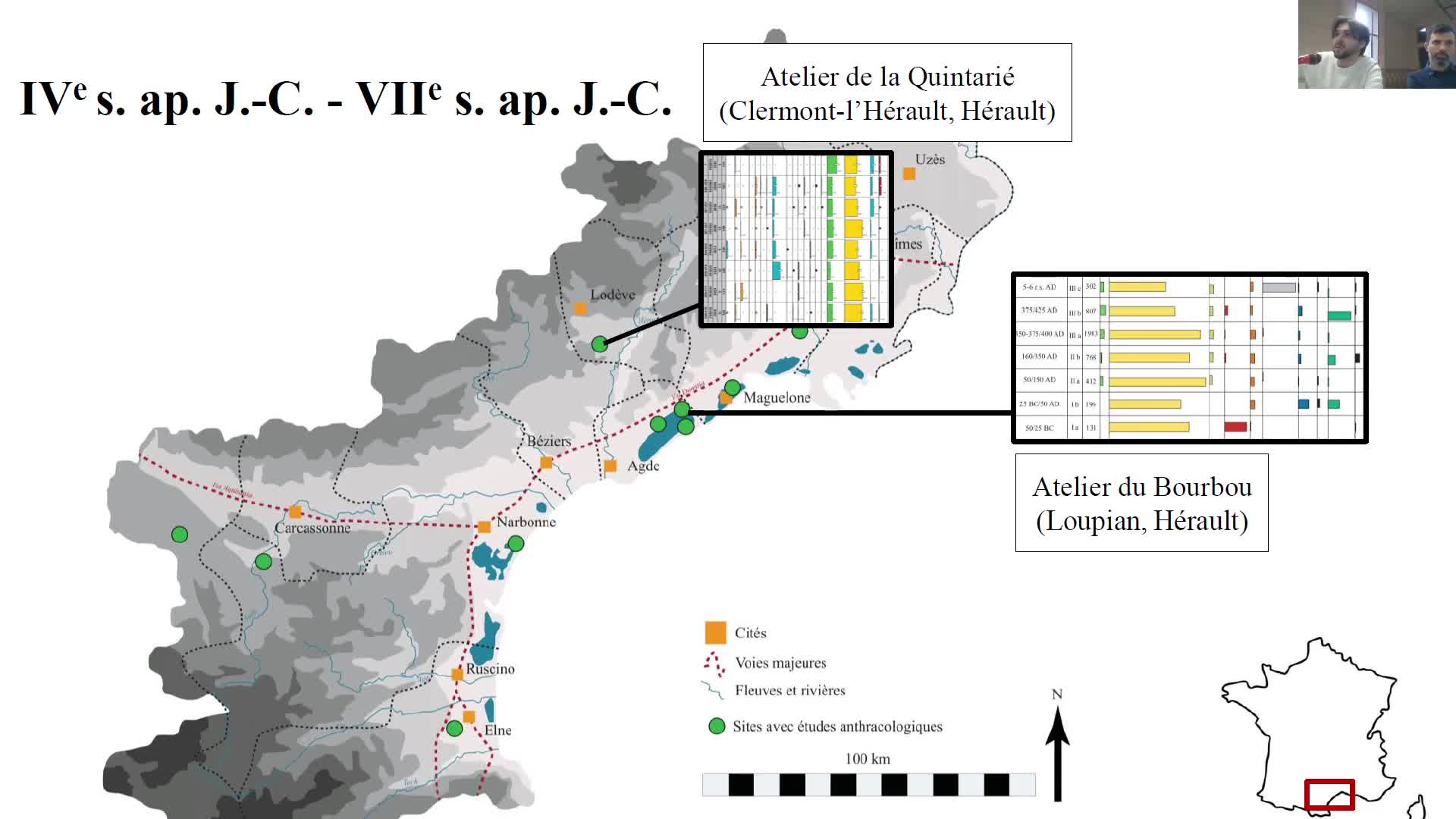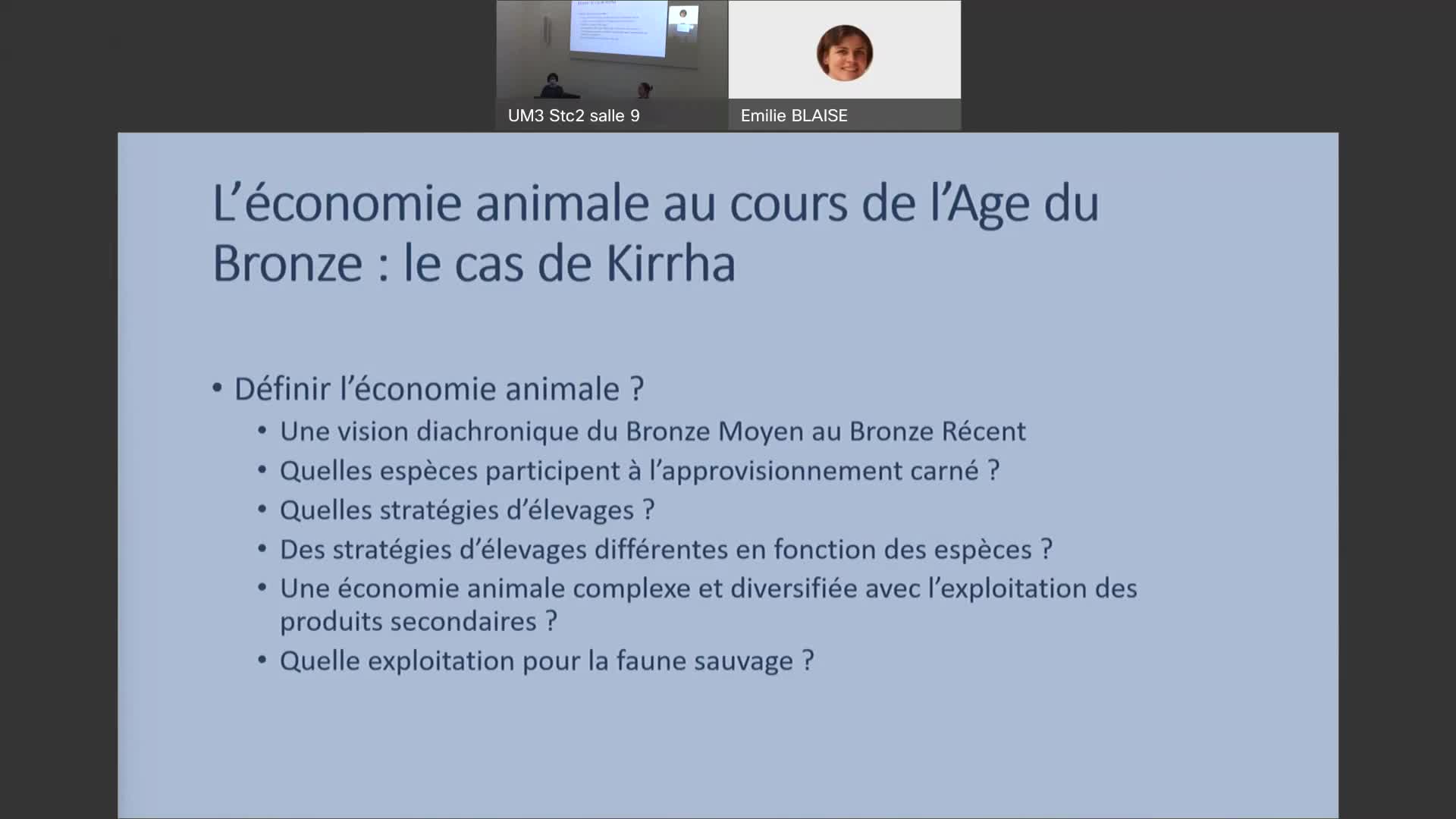Notice
Revising the microvertebrates from the Palaeolithic site of Kalamakia (Mani Peninsula), Greece / Kolendrianou Maria
- document 1 document 2 document 3
- niveau 1 niveau 2 niveau 3
Descriptif
Revising the microvertebrates from the Palaeolithic site of Kalamakia (Mani Peninsula), Greece / Kolendrianou Maria, in colloque "1st Virtual Conference for Women Archaeologists and Paleontologists. Nouveaux apports à l’étude des populations et environnements passés" organisé par le laboratoire Travaux et Recherches Archéologiques sur les Cultures, les Espaces et les Sociétés (TRACES) de l’Université Toulouse Jean Jaurès et le laboratoire Paléontologie Évolution Paléoécosystèmes (PALEVOPRIM) de l'Université de Poitiers, sous la responsabilité scientifique de Julie Bachellerie, Ana Belén Galán López (Traces), Émilie Berlioz et Margot Louail (Palevoprim). Université Toulouse Jean Jaurès, 8-9 mars 2021. [Conférence enregistrée à distance].
Session 4 : Paleoclimates andenvironmental changes.
Mani peninsula has a significant number of Palaeolithic sites, highlighting its importance as a paleoanthropological related locus. Kalamakia cave is such a site, bearing thousands of small and larger animal fossils, some Neanderthal remains, as well as numerous lithic artifacts.The present study, however, focuses on the microfaunal assemblage retrieved from the three fossiliferous units of the cave dating from ca. 90-25 kya BP, in order to re-examine and evaluate past identifications of the microvertebrate material under a palaeoenvironmental, palaeoecological and taphonomical perspective.A total of 32,319 microvertebrate specimens were examined and 38 taxa were identified, from which Reptilia were found to be the most diverse and Rodentia (specifically, Microtus sp.) the most abundant. No species considered typical of colder climates were identified,with the most common habitat types surrounding the cave throughout all three units being shrubland, forest and rocky. Concerning the taphonomy, no major events have been detected from the microvertebrate fossils’ condition, other than the occasionally naturally occurring high humidity within a cave and a mild amount of post- depositional breakage that possibly resulted from trampling (by the larger animals’ or human occupants’ activity in the interior of the cave). The main accumulators of the microvertebrate assemblage seem to have been owl predators (category 1 and/ or 2, depending on the unit). Finally, Microtus lower first molars- randomly but equally selected from each unit- were examined using geometric morphometrics and the results indicated that the local population consisted of rather robust individuals of a species within the Terricola subgenus (the dominant morphotype being M. subterraneus). A correlation trend between centroid size and molar morphology with climate seems to be plausible, since a slight divergence between the clusters of the fossilised molars corresponding to warmer and colder climate conditions was detected, something that cannot be stated definitively and needs further investigation.
Thème
Documentation
Références documentaires
KOLENDRIANOU, Maria, LIGKOVANLIS, Stefanos, MANIAKAS, Ioannis et al. (2020). The Palaeolithic cave of Kalamakia (Mani Peninsula), Greece: new insights on the palaeoenvironment using microvertebrates and mesowear analysis of ruminant teeth, Heliyon, 5, vol. 6. [En ligne : https://www.cell.com/heliyon/pdf/S2405-8440(20)30803-3.pdf].
Liens
Programme du colloque "1st Virtual Conference for Women Archaeologists and Paleontologists" (8-9 mars 2021)
Website du Laboratoire Paléontologie Évolution Paléoécosystèmes Paléoprimatologie (PALEVOPRIM)
Livret des résumés des communications du colloque "1st Virtual Conference for Women Archaeologists and Paleontologists. Nouveaux apports à l’étude des populations et environnements passés" (8-9 mars 2021)
Site internet dédié au colloque "1st Virtual Conference for Women Archaeologists and Paleontologists" (8-9 mars 2021)
Dans la même collection
-
Sensivity analysis to morphological changes of the shoulder joint: application to percussio…
Blasi-ToccacceliAliciaSensivity analysis to morphological changes of the shoulder joint: application to percussion gestures during Oldowan debitage / Alicia Blasi-Toccacceli, in colloque "1st Virtual Conference for
-
"Ouranopithecus macedoniensis" (late Miocene, Greece): analysis of mandibular fragments using …
IoannidouMelaniaOuranopithecus macedoniensis (late Miocene, Greece): analysis of mandibular fragments using 3D geometric morphometrics / Melania Ioannidou, in colloque "1st Virtual Conference for Women
-
Comminution capabilities of extant and fossil anthropoids during molar intercuspation: a preliminar…
WalkerAxelle E. C.Comminution capabilities of extant and fossil anthropoids during molar intercuspation: a preliminary experiment using a chewing simulator / Axelle E. C. Walker, in colloque "1st Virtual Conference for
-
New sperm whale cranium from the late Miocene and a revised family attribution for the small crown …
AlfsenApollineNew sperm whale cranium from the late Miocene and a revised family attribution for the small crown physeteroid Thalassocetus / Apolline Alfsen, in colloque "1st Virtual Conference for Women
-
What is shaping the brain? A perspective on brain size evolution in carnivorans / Margot…
MichaudMargotWhat is shaping the brain? A perspective on brain size evolution in carnivorans / Margot Michaud, in colloque "1st Virtual Conference for Women Archaeologists and Paleontologists. Nouveaux
-
Postnatal shape changes in the rodent mandible at a macroevolutionary scale / Morgane Dubied
DubiedMorganePostnatal shape changes in the rodent mandible at a macroevolutionary scale / Morgane Dubied, in colloque "1st Virtual Conference for Women Archaeologists and Paleontologists. Nouveaux apports à l
-
Cranial vault healing in modern humans: input of archaeological and clinical data / Aliéno…
LepetitAliénorCranial vault healing in modern humans: input of archaeological and clinical data / Aliénor Lepetit, in colloque "1st Virtual Conference for Women Archaeologists and Paleontologists. Nouveaux
-
A transdisciplinary approach to reconstruct the Nilotic socio-ecosystem in Luxor west bank during t…
NicatoreGiuliaA transdisciplinary approach to reconstruct the Nilotic socio-ecosystem in Luxor west bank during the Ptolemaic period (3rd-1st centuries BC.) / Giulia Nicatore, in colloque "1st Virtual Conference
-
From monoliths to megaliths: a new approach on the megalithic burials of southwestern France / Bosc…
BoscusSarahFrom monoliths to megaliths: a new approach on the megalithic burials of southwestern France / Boscus Sarah, in colloque "1st Virtual Conference for Women Archaeologists and Paleontologists. Nouveaux
-
Tracing Human Ancestral Migration from its Symbiotic Bacteria / Alexia Nguyen Trung
Nguyen TrungAlexiaTracing Human Ancestral Migration from its Symbiotic Bacteria / Alexia Nguyen Trung, in colloque "1st Virtual Conference for Women Archaeologists and Paleontologists. Nouveaux apports à l’étude des
-
Foragers and their symbolic landscape. Understanding the role of rock art in the territoriality of …
JobardLéaForagers and their symbolic landscape. Understanding the role of rock art in the territoriality of Later Stone Age Matobo populations / Léa Jobard, in colloque "1st Virtual Conference for Women
-
Towards a tracking of past bird seasonal migrations through geological times: what could isotopes t…
DuhamelAnaïsTowards a tracking of past bird seasonal migrations through geological times: what could isotopes tell us? / Anaïs Duhamel, in colloque "1st Virtual Conference for Women Archaeologists and
Sur le même thème
-
La découpe bouchère à travers le temps : introduction de la journée d'études
CostamagnoSandrineÀ destination principalement des étudiantes et étudiants en archéologie ainsi que des archéozoologues, cette journée visait à mettre en lumière la diversité des pratiques de boucherie à travers le
-
Décharner, mettre en pièces, fracturer le gibier au Paléolithique : même menu, mêmes façons de fair…
SoulierMarie-CécileBirousteClémentCostamagnoSandrineÀ destination principalement des étudiantes et étudiants en archéologie ainsi que des archéozoologues, cette journée visait à mettre en lumière la diversité des pratiques de boucherie à travers le
-
Défaire pour bien faire ? La désarticulation des basipodes de renne au Magdalénien moyen
BirousteClémentCostamagnoSandrineÀ destination principalement des étudiantes et étudiants en archéologie ainsi que des archéozoologues, cette journée visait à mettre en lumière la diversité des pratiques de boucherie à travers le
-
Jusqu’où peut-on aller dans la description des pratiques bouchères des groupes humains préhistoriqu…
ValAuroreÀ destination principalement des étudiantes et étudiants en archéologie ainsi que des archéozoologues, cette journée visait à mettre en lumière la diversité des pratiques de boucherie à travers le
-
Mes os sans stries… le partage et la découpe au Mésolithique
GardeurMarineMallyeJean-BaptisteÀ destination principalement des étudiantes et étudiants en archéologie ainsi que des archéozoologues, cette journée visait à mettre en lumière la diversité des pratiques de boucherie à travers le
-
Restituer l’histoire de la boucherie par l’archéologie : l’exemple de la période gauloise
Roure-HorardMarie-PierreÀ destination principalement des étudiantes et étudiants en archéologie ainsi que des archéozoologues, cette journée visait à mettre en lumière la diversité des pratiques de boucherie à travers le
-
Archéozoologie et alimentation médiévale : focus sur une boucherie à Saint-Quentin (XVe siècle)
ClavelBenoîtÀ destination principalement des étudiantes et étudiants en archéologie ainsi que des archéozoologues, cette journée visait à mettre en lumière la diversité des pratiques de boucherie à travers le
-
Du pot aux recettes : expérimentation de préparations gauloises, romaines, médiévales et modernes,…
Roure-HorardMarie-PierreNous disposons, sur de nombreux sites archéologiques, de céramiques à usage culinaire gauloises, romaines, médiévales et modernes dont les argiles ont enregistré, par imprégnation, les marqueurs
-
Approvisionner le feu en bois. Regard anthracologique sur l’exploitation du Bois des Lens et les us…
VaschaldeChristopheChardonneau-HenneuseJulienApprovisionner le feu en bois. Regard anthracologique sur l’exploitation du Bois des Lens et les usages du combustible par les potiers de l’Antiquité tardive.
-
Alimentation et élevage en Grèce centrale à l’âge du Bronze. Le cas de Kirrha
OrgeoletRaphaëlAniMed, 24 février 2022 - Raphaël ORGEOLET (MCF, CCJ Aix-en-Provence) et Marion SIRITO-OLIVIER (doctorante UPV-Montpellier 3, archéozoologue, UMR 5140 ASM)
-
Alfredo Mayoral - « Gergovie : nouvelles recherches géoarchéologiques et paléoenvironnementales »
Le jeudi 16 septembre 2021, à 20h30, sur Facebook, Page Musée de Gergovie, Alfredo Mayoral, géoarchéologue, à l'Institut Catalan d’Archéologie Classique et à GEOLAB (UMR 6042 CNRS / UCA UNILIM), a
-
Les vignes romaines : approches morphométrique et archéogénomique
BoubyLaurentLes vignes romaines : approches morphométrique et archéogénomique

